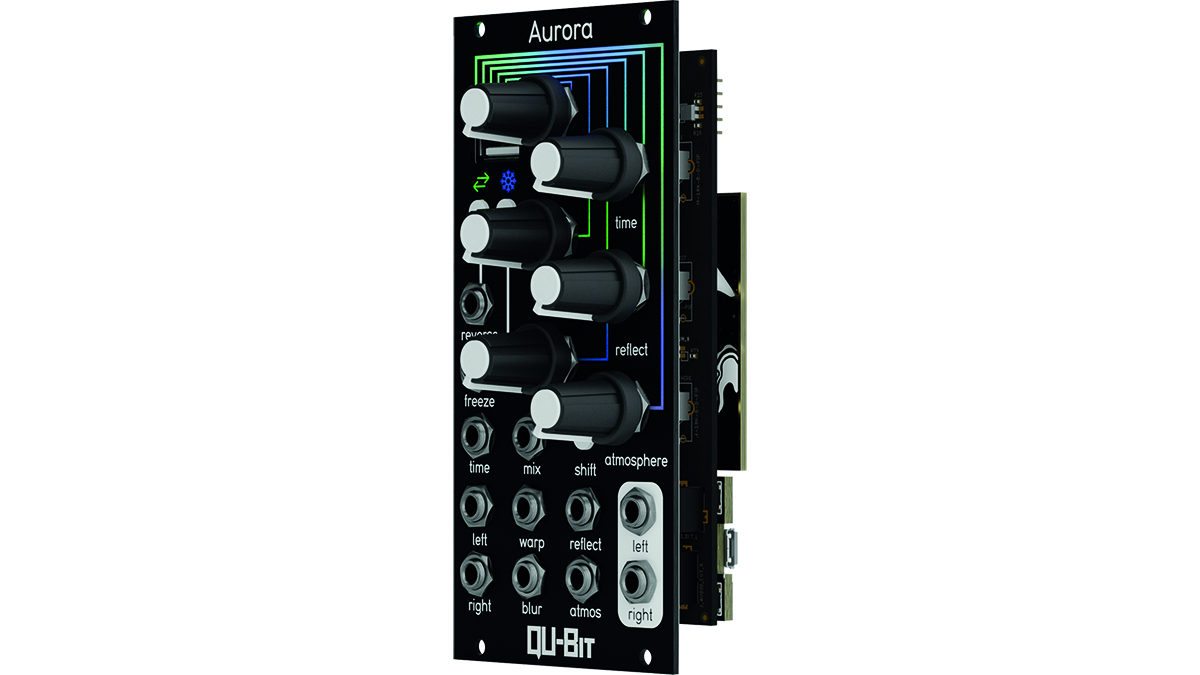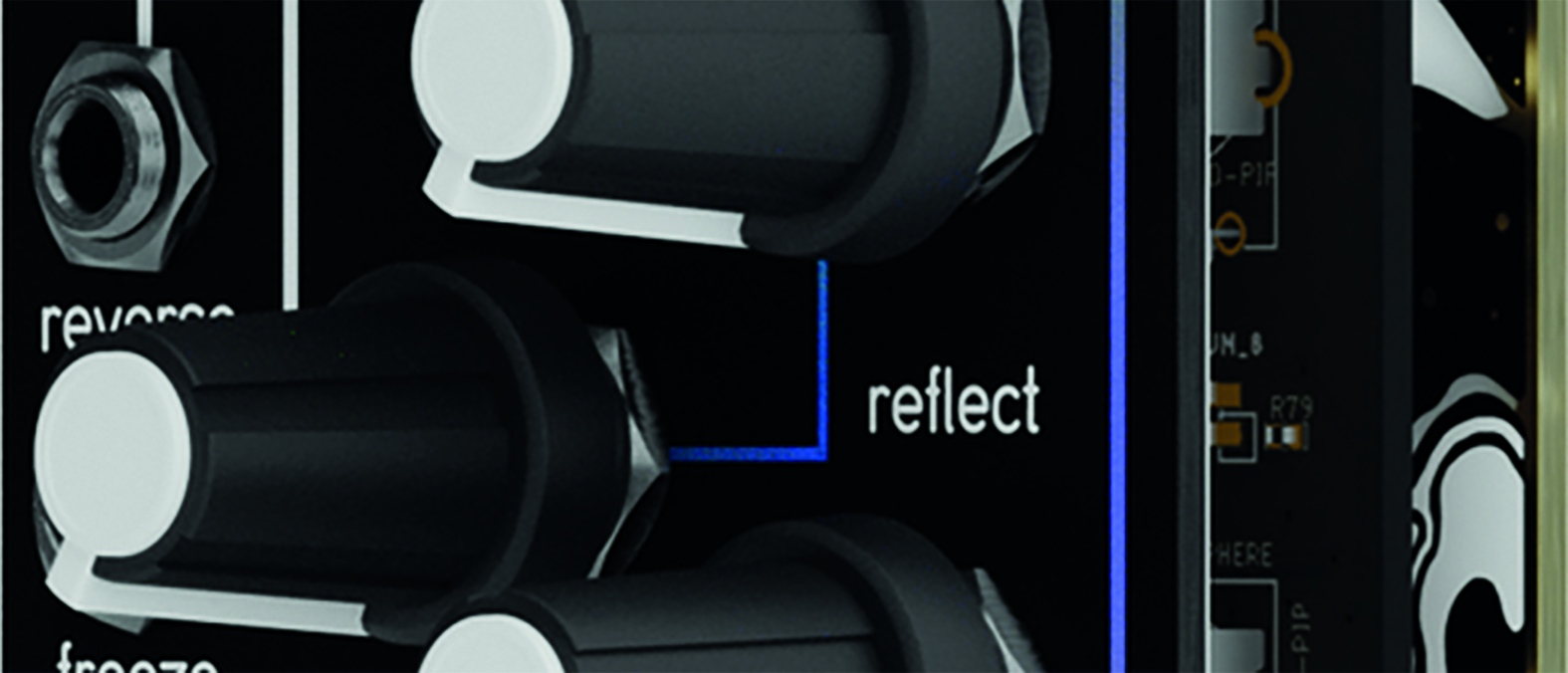MusicRadar Verdict
So much more than a reverb, the Aurora offers a massive range of tones, is fun to play and is experimental yet controllable.
Pros
- +
Massive range of sounds.
- +
Takes up little room.
- +
Fully CV controllable.
Cons
- -
No MIDI port.
MusicRadar's got your back
Qu-Bit Aurora: What is it?
When module shopping, we’re searching for a tool to do a specific job. Sometimes though, we can come across a module that offers more than expected. Aurora is one such module and is one that can turn minutes into hours, in the best way.
Aurora is a small reverb module. At 12hp and a skiff-friendly 22mm deep, it is easy to justify in even the smallest rig. It has typical Qu-bit design, with clear layout and labelling, along with some coloured strips that illuminate and pulse depending on what is happening. The whole module is sturdy, with controls that feel good in hand, with nice levels of resistance, something to look for when dialling in settings.
There is an onboard USB port but this is for user settings and firmware. It would be nice to see MIDI included but there’s comprehensive CV control, which will suit the majority of users, making that less of an issue.

Qu-Bit Aurora: Performance and verdict
So, what makes this reverb so special? It’s the sheer joy of playing it along with the vast array of sounds that can be coaxed from it. Not many modules of this type offer such an enjoyable experience as Aurora. This is in part down to the lushness of the trails, that, even at their iciest, most crystalline settings, somehow stay warm and not piercing.
Aurora can conjure the expected tones of a spectral reverb and does so with aplomb but where things really start to become special is when pitch is involved. The warp controls, which are volts per octave via CV, can be set and forgotten or played and mutated, with almost arpeggio-like results. Qu-bit suggest that Aurora can sound like alien voices or whalesong but, while true, we think that is underselling it.
There are so many ways to affect the incoming audio that the range is near limitless. Audio can be reversed, frozen, stretched and more and this highlights a key attribute: the incoming audio. It may sound obvious but the signal the module is working with is paramount here. Feed it synth tones, vocals, acoustic instruments, or percussions and all take on different qualities. The phase vocoder engine is a powerful method of morphing the signal into something different while keeping it musical.
The fact that everything is CV controllable makes Aurora easy to sync with the rest of a patch, making vast swells or spacy, tinkling, pitch adjusted reverb easy, without mushiness. A simple piano melody can form a subtle ambient track, or a hard-hitting drum track can take on new life as the time and pitch morphs
Want all the hottest music and gear news, reviews, deals, features and more, direct to your inbox? Sign up here.
Aurora is excellent: intuitive, fun and gorgeous-sounding.
MusicRadar verdict: So much more than a reverb, the Aurora offers a massive range of tones, is fun to play and is experimental yet controllable.
Qu-Bit Aurora: The web says
"It’s not content to sit in the background as a reverb, Aurora wants to play and shimmer, bend, warp and blur its way into your patch. It has a lovely ethereal quality that has shades of Beads and reverse tape delays. I like this a lot."
gearnews
Qu-Bit Aurora: Hands-on demos
Qu-Bit
Red Means Recording
Oora Music
Modular Freak
Qu-Bit Aurora: Specifications
- KEY FEATURES Stereo Spectral Reverb, 24-bit phase vocoder engine, USB port, 12 hp.
- CONTACT: Qu-Bit
